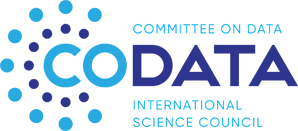 The Cross-Domain Interoperability Framework (CDIF) is a major output from the WorldFAIR project, and has been published as an initial draft with the completion of project deliverables. CDIF is a set of implementation recommendations, based on profiles of common, domain-neutral metadata standards which are aligned to work together to support core functions required by FAIR. CDIF will continue to be developed and maintained, based on feedback from implementers and the broader FAIR community.
The Cross-Domain Interoperability Framework (CDIF) is a major output from the WorldFAIR project, and has been published as an initial draft with the completion of project deliverables. CDIF is a set of implementation recommendations, based on profiles of common, domain-neutral metadata standards which are aligned to work together to support core functions required by FAIR. CDIF will continue to be developed and maintained, based on feedback from implementers and the broader FAIR community.
- Overview of CDIF
- Discovery Profile
- Alignment of CDIF with global digital transformations: A spotlight on the Data and Information Strategy and Implementation Plan of the UN Decade of Ocean Science for Sustainable Development
- Data Description and DDI-CDI
- Data Integration: the SDGs and Google Data Commons
- Future Topics and Engaging with CDIF Development
- Discussion
The webinar took place on Thu 25 July at 15:00-16:30 CEST / 13:00-14:30 UTC. Missed it or would like to revisit the presentations? See the recording and link to presentations below.
Recording of the Webinar
This webinar introduced the current recommendations, and describe future directions. The initial CDIF draft covers the following core set of functions necessary to support FAIR exchanges across domain and infrastructure boundaries:
- Discovery (search, cataloguing, etc.)
- Access (programmatic location of access conditions and terms of use)
- Publication of controlled vocabularies (codelists, classifications, and concepts used in data definition)
- Integration-ready description of data (granular, variable-level metadata)
Additionally, guidance is provided on some ‘universal’ areas which are critical to data integration: time, geography, and units of measure.
Much work remains to be done, and some discussion is provided in the draft of other topics which will serve as the focus of future work: mappings between data sets, provenance and data contextualization, expanded description of data sets and the integration process, and AI readiness. Other relevant topics may emerge.
CDIF is intended to be maintained as the needs of the community develop, and as the technology and standards picture changes. In order to sustain the development of the recommendations, it is important to have an active dialogue with implementers and the FAIR community broadly. To this end, the webinar introduced channels for providing reactions and feedback, for both implementers and business-level users to help drive the future directions of the CDIF development. Opportunities for active engagement with the CDIF development community were also described.
- Announce release of the draft and indication of future directions
- Collecting feedback and reviews (GitHub, website)
- Expansion of the CDIF initiative and broadening the community in future
Engage with CDIF by signing-up to join the Cross-Domain Interoperability Framework (CDIF)Community or the Working Group or Advisory Group.
